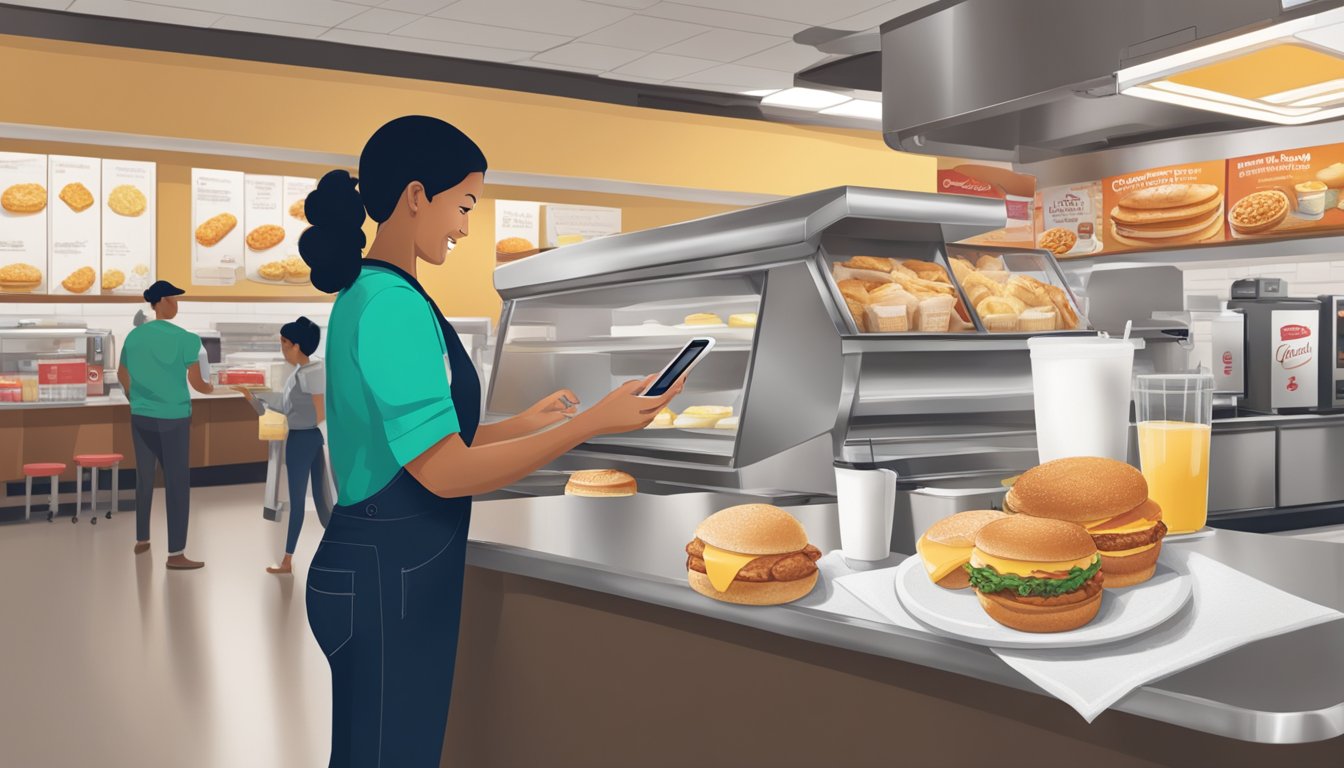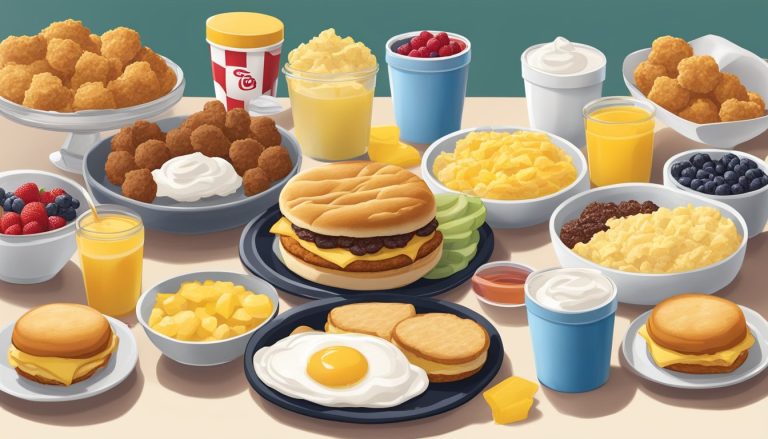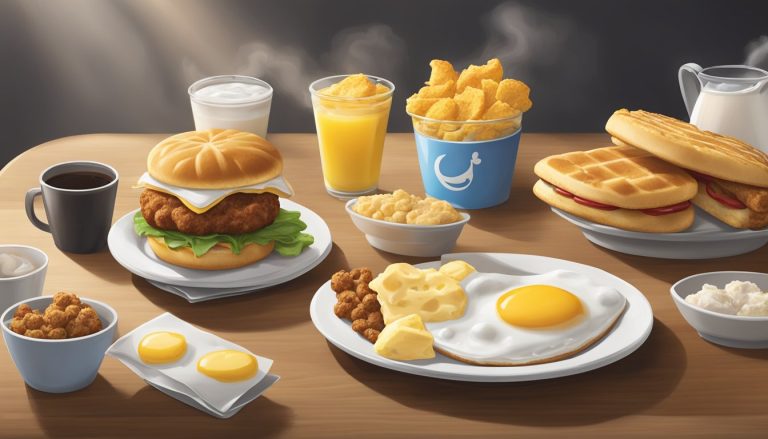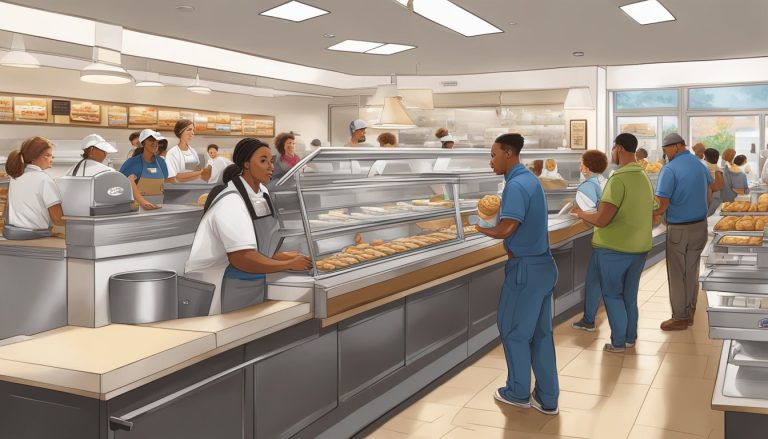Technology has transformed the way customers order breakfast at Chick-fil-A. The fast-food chain leverages innovative solutions to streamline the ordering process and enhance customer experience. Chick-fil-A’s digital ordering systems and mobile app allow customers to place breakfast orders quickly and conveniently, reducing wait times and improving service efficiency.
In the drive-thru, Chick-fil-A employs face-to-face ordering with team members using Bluetooth-enabled tablets. This approach speeds up the ordering process while maintaining a personal touch. The company also tests new restaurant designs, including an elevated drive-thru concept, to better serve customers in a digital-focused world.
Chick-fil-A’s commitment to technological innovation extends beyond ordering. The company views technology as a tool to facilitate human interactions and improve hospitality. By combining digital solutions with their signature customer service, Chick-fil-A aims to create a seamless and enjoyable breakfast ordering experience for all patrons.
The Evolution of Chick-fil-A’s Ordering System
Chick-fil-A has embraced technological advancements to streamline its ordering process. The company’s system has transformed from traditional methods to cutting-edge digital solutions, enhancing customer experience and operational efficiency.
Pre-Digital Era to Mobile Ordering
In its early days, Chick-fil-A relied on conventional ordering methods. Customers placed orders at the counter or through drive-through speakers. As technology progressed, the restaurant chain adapted swiftly.
The introduction of mobile ordering marked a significant shift. Customers gained the ability to place orders through smartphones, reducing wait times and enhancing convenience. This innovation allowed for customization and saved favorite orders for quick reordering.
Mobile ordering also improved order accuracy and provided valuable data on customer preferences. The company used this information to refine menu offerings and tailor marketing strategies.
Drive-Through Innovation
Chick-fil-A’s drive-through experience has undergone substantial improvements. The company implemented dual drive-through lanes to manage high traffic volumes more efficiently. This change reduced wait times and increased customer satisfaction.
Recently, Chick-fil-A announced plans to equip 300 locations with Mobile Thru technology. This system allows customers to place orders through the mobile app and pick up their food via a dedicated drive-through lane. The innovation stems from a successful pilot program that received positive feedback.
Mobile Thru technology aims to further reduce wait times and enhance the overall drive-through experience. It integrates seamlessly with the existing mobile ordering system, providing a cohesive digital ordering ecosystem for customers.
Digital Ordering and the Chick-fil-A App
The Chick-fil-A App has revolutionized the breakfast ordering experience, offering convenience and efficiency to customers. This digital platform has significantly impacted sales and transformed customer behavior.
App Features and User Experience
The Chick-fil-A App provides a user-friendly interface for mobile ordering. Customers can easily browse the breakfast menu, customize items, and place orders with just a few taps.
The app incorporates location services and geofencing technology. This feature allows the restaurant to start preparing orders when customers are nearby, reducing wait times for curbside and carryout orders.
Mobile ordering through the app includes dedicated Mobile Thru lanes at select locations. This innovation helps streamline the pickup process and keeps customer traffic flowing smoothly.
Impact on Sales and Customer Behavior
Digital orders have become a substantial portion of Chick-fil-A’s sales. In some markets, they account for over half of total sales, indicating a strong customer preference for this ordering method.
The app has changed how customers interact with the restaurant. Many now opt for mobile ordering, especially during busy breakfast hours, to save time and avoid queues.
Chick-fil-A’s digital ordering system has improved operational efficiency. It allows the kitchen to better manage order flow and preparation times, enhancing overall customer satisfaction.
The convenience of digital ordering has likely increased customer loyalty and repeat visits. Regular app users can easily reorder their favorite breakfast items with minimal effort.
Enterprise Architecture and Technological Infrastructure
Chick-fil-A’s technological backbone enables seamless breakfast ordering through a robust enterprise architecture and infrastructure. This foundation supports the company’s growth while ensuring reliable performance for customers and staff alike.
Supporting Scalable Growth
Chick-fil-A’s enterprise architecture team focuses on implementing technology strategies that enable key business outcomes. They prioritize cross-audience initiatives to maximize impact across the organization. The team oversees the technology health of the enterprise, managing different aspects as they relate to various business functions.
As Chick-fil-A expands, its infrastructure adapts to handle increased order volumes. The company leverages edge computing to enhance its capabilities, applying this technology across software engineering, product development, and analytics disciplines. This approach allows Chick-fil-A to serve customers more efficiently during peak breakfast hours.
Ensuring Reliability and Performance
The technological infrastructure at Chick-fil-A is designed to maintain high reliability and performance standards. Enterprise architects work closely with restaurant design teams to integrate technology seamlessly into the physical space, optimizing the breakfast ordering process.
Chick-fil-A’s systems are built to handle the morning rush without compromising speed or accuracy. The company employs cloud technologies to ensure scalability and responsiveness during busy periods. This infrastructure supports various ordering channels, including mobile apps, kiosks, and drive-thru systems, providing a consistent experience for breakfast patrons.
Regular performance monitoring and updates help maintain system integrity. The enterprise architecture team collaborates with other departments to identify and address potential bottlenecks, ensuring a smooth ordering process for customers craving their morning chicken biscuits and coffee.
The Intersection of Fast Food and Technology

Fast food chains are rapidly adopting new technologies to enhance customer experiences and streamline operations. This shift is reshaping how people order and receive their meals, with a focus on speed, convenience, and personalization.
Staying Ahead in a Competitive Market
Fast food giants like Chick-fil-A are leveraging technology to gain a competitive edge. Digital ordering systems and mobile apps allow customers to browse menus, customize orders, and pay with ease. Self-service kiosks in restaurants reduce wait times and improve order accuracy.
Data-driven personalization enables chains to offer tailored promotions and remember customer preferences. This enhances loyalty and encourages repeat visits. Kitchen automation and smart equipment help prepare food faster and more consistently.
Contactless payment options have become increasingly popular, offering added security and convenience. Some restaurants use AI-powered voice recognition for drive-thru orders, further speeding up service.
Incorporating Emerging Tech Trends
Geofencing technology allows fast food chains to send targeted promotions to customers when they’re near a location. This can drive foot traffic and boost sales during slower periods.
Artificial intelligence is being used to optimize menu offerings, predict ingredient needs, and manage inventory. Some chains are experimenting with drone delivery to reach customers in new ways.
Virtual and augmented reality may soon play a role in employee training or even customer ordering experiences. Blockchain technology could improve supply chain transparency and food safety tracking.
As technology evolves, fast food restaurants will continue to adapt, seeking innovative ways to serve customers efficiently while maintaining food quality and brand identity.
Collaboration Efforts for Enhanced Service

Chick-fil-A’s commitment to improving breakfast service relies heavily on collaborative initiatives. The company actively engages operators and external partners to drive innovation and empower employees in delivering exceptional customer experiences.
Partnerships for Innovation
Chick-fil-A collaborates with technology firms to develop cutting-edge solutions for its breakfast ordering process. These partnerships have resulted in advanced mobile apps, AI-powered drive-thru systems, and predictive analytics tools. The company works closely with software developers to create user-friendly interfaces that simplify the ordering experience for customers.
Chick-fil-A also partners with equipment manufacturers to design custom kitchen technologies. These innovations help streamline food preparation and reduce wait times during peak breakfast hours. The collaborative approach ensures that new technologies integrate seamlessly with existing systems and meet the specific needs of Chick-fil-A restaurants.
Operator and Employee Empowerment
Chick-fil-A empowers its operators and employees through comprehensive training programs and technology-focused initiatives. The company provides operators with data analytics tools to optimize staffing levels and inventory management during breakfast service. This data-driven approach enables more efficient operations and improved customer satisfaction.
Employees receive ongoing training on new technologies and service protocols. Chick-fil-A encourages feedback from frontline staff, incorporating their insights into future improvements. The company has implemented digital platforms for employees to share best practices and troubleshoot issues in real-time.
Chick-fil-A also organizes regular operator summits and workshops. These events foster collaboration and knowledge sharing among franchise owners. Operators can discuss successful strategies for implementing new breakfast technologies and addressing common challenges.
Adaptation and Tech Responses to the Pandemic

The COVID-19 pandemic catalyzed rapid technological changes in fast food ordering. Chick-fil-A quickly adapted its systems to meet new customer needs and safety requirements.
Shifts in Ordering Habits
Mobile and digital ordering saw a dramatic surge during the pandemic. Chick-fil-A expanded its app capabilities to handle increased demand. The app allowed customers to browse menus, customize orders, and pay contactlessly.
Drive-thru lanes were optimized for efficiency. Many locations added multiple lanes and outdoor ordering tablets. This reduced wait times during peak breakfast hours.
Curbside pickup emerged as a popular option. Customers could park in designated spots and have food brought directly to their vehicles. This contactless method appealed to those wary of indoor spaces.
Responding to New Safety Concerns
Chick-fil-A implemented stringent sanitization protocols for all digital ordering devices. Tablet screens and payment terminals were frequently disinfected between uses.
Contactless payment methods like Apple Pay and Google Wallet were integrated into the ordering process. This minimized physical interactions during transactions.
The company introduced tamper-evident packaging for mobile and delivery orders. Sealed bags gave customers confidence their food remained untouched during transit.
Digital menu boards replaced physical menus in many locations. This reduced high-touch surfaces and allowed for quick updates to reflect product availability.




